Facade plaster: features of choice and subtleties of work
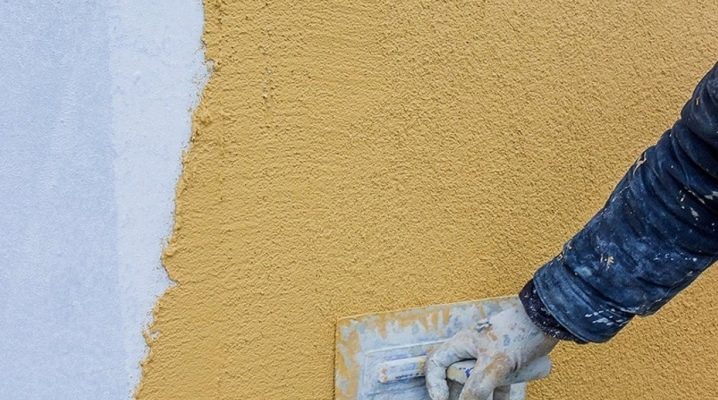
Great attention is paid to the decoration of facades. Against the background of actively used finishing materials, special plaster is often perceived with skepticism. But this attitude is completely unreasonable - this material is able to show itself from the best side and decorate the appearance of the house.
Success is achieved provided that the best type of plaster is selected. Moreover, it must be applied in accordance with technological requirements. This can be clearly represented when the specificity of decorative plaster is understood.
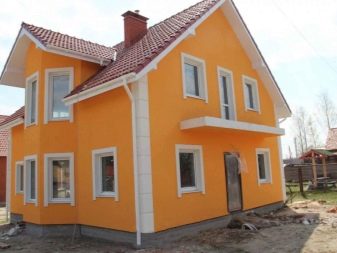

Peculiarities
Simple and decorative plaster is always applied directly to the surface; this does not require the creation of a lathing or frame. For finishers, this material is attractive because there is no need to close small cracks, knock down protrusions. Everything that's needed - make the layer thicker, and the defects will disappear by themselves.
You can decorate the facade of the house on a free (not covered by anything) wall and on top of thermal insulation. Experts identify several types of decorative plaster. You will not be able to choose the right type of coverage if you do not know what their differences are.
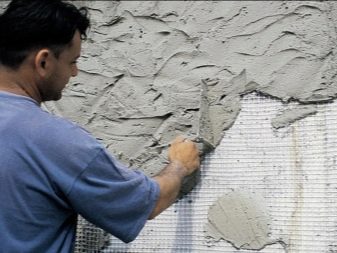

Types of mixtures
On the modern market of finishing materials, there is a wide range of facade plaster for different tastes and budgets. From the richest selection, we note several main types of coverage that are in the greatest demand among buyers.

Acrylic
The acrylic composition is made on the basis of acrylic resins - the same ones that are used in the production of the famous PVA glue. These mixtures are supplied ready-to-use; there is no need to mix them with other materials. More often, acrylic-based decor is used on surfaces insulated with foam or expanded polystyrene.
The positive aspects of such coverage are:
- vapor permeability;
- high elasticity;
- self-closing of minor defects;
- the presence of antibacterial components and fungicides;
- the ability to use at different temperatures;
- hydrophobic surface properties;
- the ability to wash the wall.


The disadvantage of acrylic plaster is due to the accumulation of static electricity on it. It does not hit with discharges, but attracts and retains dirt, as well as dust.

Mineral
The mineral variety of decorative plaster contains cement, its price is relatively low. Such a coating is particularly good at letting steam through and does not allow the development of harmful microorganisms. It does not burn. Mineral compositions do not shrink or crack, even after complete drying. They:
- resistant to frost;
- tolerate contact with water well;
- environmentally friendly;
- wash well.
- Difficulties begin during installation:
- it is required to dilute dry matter;
- if the proportions are violated, the mixture will be unusable;
- without special training, it remains only to make numerous tests or contact professionals.



Mineral plaster has a limited range of colors. It is easily destroyed by vibration and even under ideal conditions it lasts a maximum of 10 years.


Silicone
Silicone plaster is more elastic than the acrylic variety. It is capable of patching façade cracks that have already appeared and that arise later.Its resistance to harmful biological factors, water, hypothermia is quite high. The appearance of an unpleasant odor is excluded, the warranty period for the operation of such a finish is a quarter of a century.
The use of such a composition is limited by its significant cost. Silicate grades are based on "liquid" glass, the purpose of their use is to cover facades, which were previously insulated with mineral wool boards, expanded polystyrene.


This material:
- does not pick up static electricity;
- elastic;
- allows steam to pass through and repels water;
- does not require sophisticated care.


Only trained specialists can apply the silicate composition: it dries very quickly (there is almost no time for error correction).


Terrazitic
Terrazite plaster is a complex substance composed of white cement, fluff, marble chips, white sand, mica, glass and a number of other materials. Such mixtures set quickly, so it is unacceptable to cook them in large portions.
The preparation of terrazite plaster for use is reduced only to the dilution of dry mixtures with water components.



Application area
The areas of use of decorative plasters are quite diverse. With their help, it is possible to protect parts of the foundations raised above the soil level, to prevent cracking and weakening of the structure. Using ready-made dry mixes, it is possible to weaken the effect of frost and water. Some of the additives in such compositions increase their plasticity.
If the finishing implies maximum savings, the solution is prepared independently on the basis of cement and sand with the addition of PVA glue.
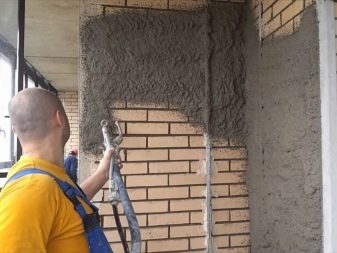

If you need to trim a layer of insulation, plastering compounds turn out to be a completely effective solution to the problem. They can be applied to foam, mineral wool... Builders can create a smooth and textured layer to create a personalized solution. Work on the technology is carried out at a temperature not lower than +5 and not higher than +30 degrees (when it is dry and there is no strong wind).
Plastering on polystyrene foam, polystyrene foam and polystyrene foam is performed with compositions intended for coating synthetic heat insulators. Some factories produce only coating mixtures, others try to give their product universal qualities. If you have to finish the facade, it would be more correct to purchase one brand of plaster. Plastering on aerated concrete walls is also quite possible.... Such a coating allows avoiding the problem typical for any aerated concrete blocks - destruction upon contact with moisture.

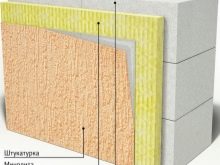

According to professionals, the interior finishing should be done before the exterior, and the gap should be 3 or 4 months. An exception is made only for buildings that are located on the banks of reservoirs or in especially damp places.
After the construction of houses from aerated concrete, they wait about six months, then in the next warm season they finish the facade... For it, you need to choose a composition that surpasses the base layer in vapor permeability.
In this case, the plaster should be:
- frost resistant;
- elastic;
- good adhesion to the surface.

Most often, professional builders use mineral plasters. Acrylic blends are not suitable for outdoor use.
The application of plaster allows you to imitate natural stone even on the most faded and inexpressive surfaces. The semblance of natural rocks with their roughness will create coarse-grained compositions.


A less expressive, but good looking texture is created with medium grade plasters.
To ensure maximum smoothness of the walls, it is advisable to use gypsum mixtures. The appearance is varied due to the different basis. This can be, for example, marble chips, a combination of granite and quartz.


The question often arises: is it permissible to plaster OSB slabs. After all, plaster easily absorbs atmospheric moisture and transfers it to the base.As a result, the service life of the panel is reduced. Therefore, professionals work like this:
- fastening the sheathing (bituminous cardboard, kraft paper or paper roofing material);
- mount reinforcing mesh;
- pour a special glue on the finished block so that the mesh completely goes into it;
- primed the base.


Each of these preparatory work is carried out only with a rigid connection of the slabs to each other and to the floors. Most often, vapor-permeable mineral or silicate mixtures are used for the main plaster layer. For exterior work on finishing a private house, the use of DSP boards has become widespread. An alternative to this is multilayer plastering over steel mesh.
The DSP method is quite fast, but the service life of such a coating is only 5 or 6 years (cracks begin to appear later). Choosing the second scheme, builders will spend more effort and money, but the result will last 10-15 years.


Cement particle board is smooth, has excellent adhesion and is difficult to distinguish from a stone surface. To reduce the effects of thermal expansion and cracking, vertical or horizontal plaster sections can be used (separated by decorative strips). It is permissible to use modern elastic acrylic-based plaster, which can withstand temperature extremes from -60 to +650 degrees.
Multi-layer plasters can only be applied if the chips in the slabs are oriented horizontally (ensured by special installation).


Facade plasters on bricks can be applied in a layer maximum 5 cm thick, even if reinforcement is carried out. The wet method of applying the composition will even out extremely uneven surfaces and avoid a significant increase in wall thickness.
Newly built brick walls cannot be plastered... It is required to wait until it is completely compacted and dry to avoid cracking or peeling of the entire applied layer.


How to calculate the expense?
After a certain type of plaster has been selected, it is necessary to find out how much of the mixture will be used. Even in newly built houses that fully meet the required standards, the difference between real and ideal walls can be about 2.5 cm.
The use of the building level will help to accurately find out this indicator. The calculation is carried out for each square meter separately, placing beacons and evaluating with their help the required thickness of the cladding.


Responsible manufacturers invariably indicate consumption on the assumption that the layer thickness is 1 cm. Do not apply too much plaster, ignoring the average rate., otherwise there is a high risk of cracking and shedding.
Facade decorative plasters are consumed in an amount of up to 9 kg per 1 sq. m., in the case of cement mixtures, this figure doubles. A minimum of 5 mm of plaster is applied to brick walls, the maximum thickness can be 50 mm (with a reinforced mesh, without it this parameter is 25 mm).


The concrete is covered with a layer of 2 - 5 mm, if it is too uneven, use a reinforcing mesh and up to 70 mm of plaster. It is necessary to cover aerated concrete with a decorative layer of no more than 15 mm. Additionally, take into account how the applied composition will react with the base. It is advisable to leave a reserve of 5 - 7%: it will cover possible errors in the calculation and performance of the work itself.


Preparatory work
When the material is selected, purchased and brought in, you need to prepare for plastering. Preparation begins with leveling the surface to prevent waste of material. If the difference with the vertical and horizontal planes exceeds 4 cm, it is necessary to compensate for defects by means of a steel mesh, which is held on nails or self-tapping screws. The wall needs to be cleaned of the slightest dirt and grease.
The adhesion of the applied layer to the base is ensured by:
- by creating incisions in concrete or covering it with a metal net;
- wood upholstery with shingles;
- placing brick walls in a wasteland or processing masonry seams.
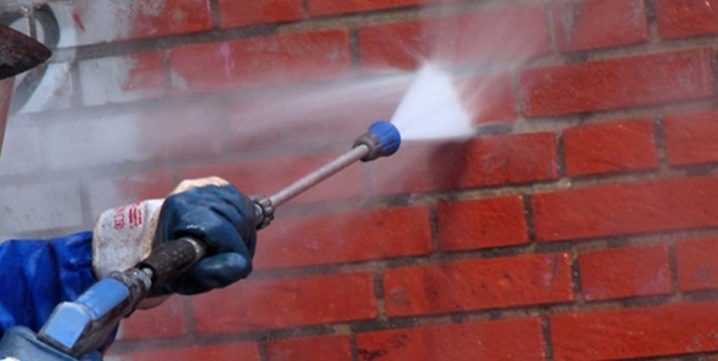
Where temperature or moisture expansion of the material, different in terms of shrinkage, are encountered, steel strips are used formed by cells of 1x1 cm. The width of the strip cannot be less than 200 mm. As an option, sometimes create expansion joints (breaks in the plaster layer). As beacons on the facade surface, when plaster is created for the first time, inventory metal markings or slatted strips 40-50 mm wide are used.
For the device of the plaster layer, you need to purchase high-quality rollers and other necessary tools.

It does not matter if wooden or metal beacon strips are used, they are dismantled before applying the final coating. This is important because with normal working methods contact with liquid is inevitable, as well as exposure to atmospheric precipitation.
When leveling, part of the protective layer, if any, will be removed. If the wall is especially dry or made of hygroscopic material, it must be primed twice or even three times..

Application process
Wet plastering technology allows almost no increase in wall thickness and minimizes the load on the supporting elements. At the same time, thermal conductivity and protection against extraneous sounds are improved. Although the structure is lightweight, the plinth profile is assembled with great care. Otherwise, the lining will be fragile and will quickly be destroyed.

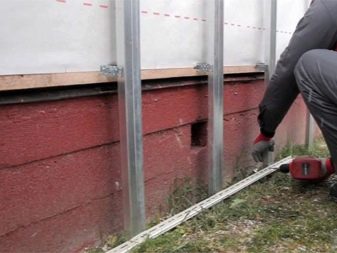
Installation of profiles begins at 3 - 4 cm above the soil level. The distance between the attachment points must be made no more than 20 cm. The joints at the corners must be fixed with a specially designed corner profile. The edges of the mats or slabs are not covered with glue; an indent of at least 30 mm is made.
Plastering a wall with your own hands is not so easy; a machine technique helps to simplify the work. Even the most trained and responsible plasterers cannot guarantee exactly the same composition of the mixture in all portions. If the same plaster is applied mechanically, it will be much easier to maintain stable characteristics.... This means that the house from the outside will be more attractive. During operation, the machine introduces air into the mixture, so the consumption of the composition decreases.



Tips & Tricks
It is recommended to carefully select a shade that is harmoniously combined with the surrounding space. Light tones retain their original color longer than dark tones. To keep the surface beautiful longer it is required to eliminate small cracks in a timely manner, without waiting for their growth.
Certain types of plaster can be used for additional insulation (haunklif). Do not expect them to be as effective in winter as rock wool and foam. But to enhance thermal protection, such a solution is quite acceptable.
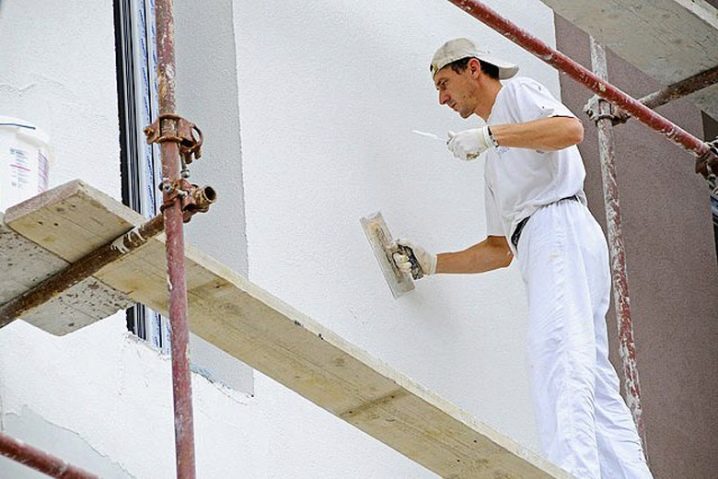
For more information on choosing a plaster facade, see the next video.













The comment was sent successfully.